

Wire Splices
I have seen several questions on
splicing wires so I thought I would share my process.
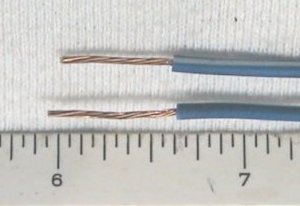
First, strip the insulation back
on each wire 1/2 - 3/4 inch and lightly twist the strands together.
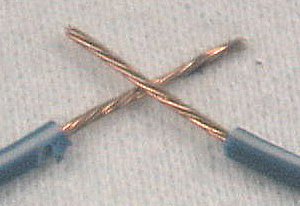
Holding one wire in each hand,
cross them to form an "X".

Next, fold the tip of each wire
down around the base of the other. In the instance above, the wire
on the left would fold forward and down around the wire on the right.
The wire on the right folds backward and down around the wire on the left.
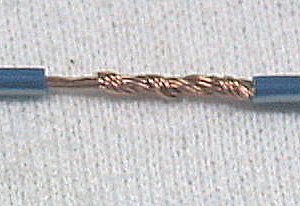
When complete, the wires should
form a nice tight spiral around the base of the other, and the whole splice
is not any bigger than the original wire.

Next, solder the wire. Soldering
is an art that takes some practice. Without going into pages of detail
here, I try and get a small drop of liquid solder between the iron and
the wire. This helps with heat transfer. As the wire heats
up, I touch it a couple of times with the solder. The molten solder
will wick into the wire. I then hold the iron on the wire for a few
more seconds to make sure the joint is good and hot, then pull the iron
away and allow the wire to cool undisturbed. The joint should look
smooth and you should be able to nearly see the indicidual wires in the
solder. If the joint has a grainy appearance, this is called a "cold
joint" and is generally caused by moving the joint before the solder has
cooled. Experiment with this and you will see what I mean.
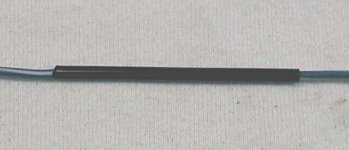
To finish the joint, slide a piece
of heat shrink tubing over the solder joint and heat. The resulting
joint is really no bigger than the wire itself, stronger than the base
wire, resistant to vibration and corrosion as well.
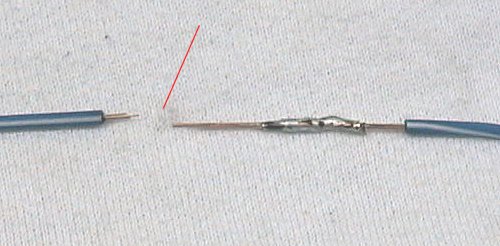
This test shows a joint pulled
in tension to failure. Note that the location of the failure is well
away from the point of the original splice.
That is really all there is to
it. About the only time *NOT* to use a soldered joint like this is
when connecting the signal wire of the oxygen sensor. The sensor
needs a reference to atmospheric oxygen. Early sensors had a small
hole in the case, but it often plugged with dirt and debris. In a
modern sensor, the sensor wire is designed to allow a small amount of air
to premeate down it's length. If you solder the wire, the oxygen
can no longer get through the joint, so a well crimped connection is recommended.
Also, from experience, if you need
to splice any of the shielded wires, *DO NOT* splice the wire in the middle
of the run . Replace the entire wire with a new shielded wire.
(See my troubles with the distributor code 4!)










